Orange Birch Bolete
A tasty member of the greater Bolete family. This mushroom can sometimes also be known as the Boletus testaceoscaber or Boletus rufescens.
| Mushroom Type | |
| Common Names | Orange Birch Bolete (EN), Cap Tyllog Melyngoch Bedw (CY), Koźlarz Pomarańczowożółty (PL), Kormostönkű Érdestinóru (HU) |
| Scientific Name | Boletus / Leccinum versipelle |
| Synonyms | Boletus versipellis, Boletus testaceoscaber, Boletus rufescens |
| Season Start | Jul |
| Season End | Nov |
| Average Mushroom height (CM) | 8-13 |
| Average Cap width (CM) | 7-10 |
Cap
7-10 cm. Starting ovate opening to broadly convex and staying like that until finally flattening out a bit with age, can be slightly downy. Orange to red orange/brown or even yellowish, this mushroom can vary greatly in cap colour and the versipelle used to be thought of as several different Leccinum species. The top edge of the cap overhangs the pores a little bit which can help with identification.
Stem
8-13 cm long, 1.5-3.5 cm diameter. White to off-white mottled with small brown to black scales which give it a dirty appearance. The stem can be longer than the diameter of the cap.
Flesh
White/pale grey turning dark blue/green in the stem to dark grey/black on cooking.
Possible Confusion
The Orange Bolete (Leccinum aurantiacum), pictured, looks almost identical and can grow with Birch but the two are edible if well cooked.
Aspen Bolete (Leccinum albostipitatum) is a rare find in the UK and it grows exclusively with Poplar and Aspen. Its stem is initially white with the floccules turning reddish with age.
Spore Print
Brown. Subfusiform.
Taste / Smell
Good, similar to the Cep. Must be well cooked before consumption as it is mildly toxic, 15 to 20 minutes apparently destroys all the toxin.
Frequency
Fairly common.



 (22 votes, average: 3.73 out of 5)
(22 votes, average: 3.73 out of 5)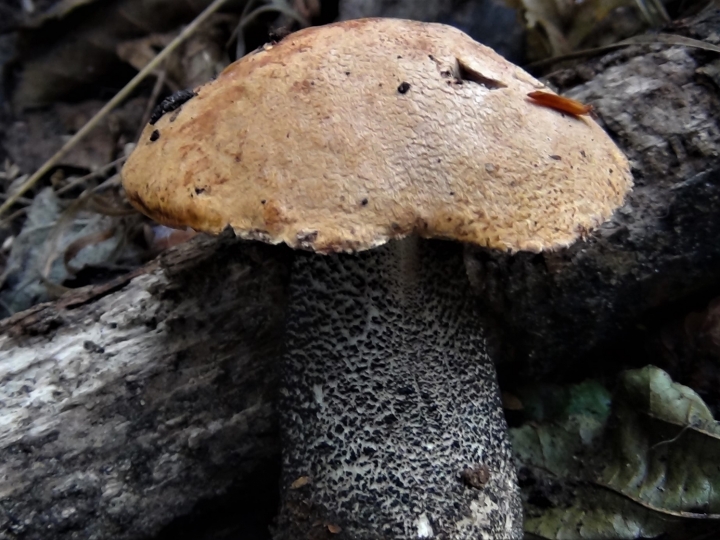












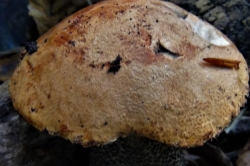
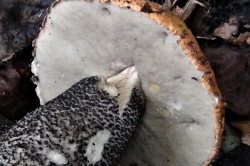
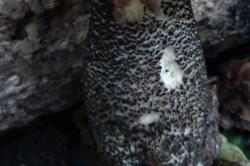
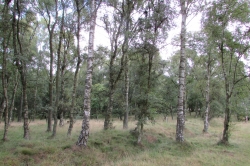
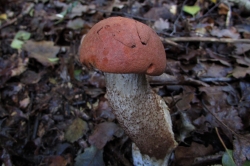





7 comments for Orange Birch Bolete
The comment that this mushroom is toxic is simply not true, we have consumed a lot of these raw over the years. Not once has anyone ever been poisoned or anything like that. It would be interesting to see a link to a scientific paper confirming the toxicity of L.versipelle as well as other related fungi.
I agree, have eaten them both cooked and raw for years and never had any issues.
I have just sliced and fried one for the first time but found it disappointingly tasteless, and rendered rather floppy in texture. Is this to be expected ? Best eaten raw maybe ?
That’s a pity, I like the Orange Birch Bolete but for me, any mushroom fried in lots of butter tastes great. I don’t recommend eating wild mushrooms raw.
Orange birch bolete toxicity varies with geography. In some countries (such as Norway), these mushrooms can be quite toxic and you will get _very_ ill if you consume it raw. Disregard the other comments on this post, they are beyond clueless and outright dangerous.
You are quite right, we never recommend eating any edible Amanita raw, if people want to eat them, they should be well cooked. I know people who have been ill from eating these mushrooms raw or partially cooked, this is not scientific but from people who know mushrooms. There are quite a few mushrooms that make a small percentage of people ill which most can eat with impunity. We try to mention any reactions we know about in our mushroom guide.
I am afraid that I stand firmly in the camp of those who have found that the Orange Bolete mushrooms they are collecting are not toxic to them. I have never eaten any wild mushroom raw (not even chanterelles); but my family and friends and I have eaten the Orange Boletes (whether Oak or Birch) once lightly sauteed and we have none of us ever had any ill effects at all – Indeed these are treasured as the best-tasting wild mushrooms in our area. If for no other reason, they are preferable to Penny Buns for foraging, because they don’t seem to be prone to the insects and maggots that infest three out of four Penny Buns that we bring home